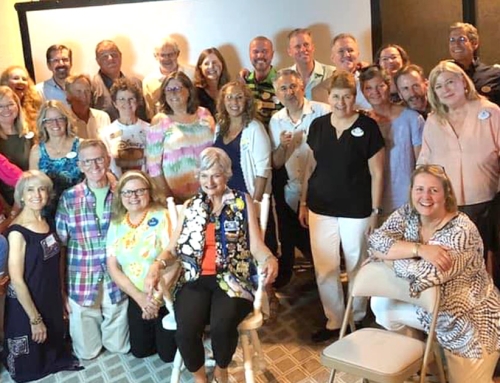
By Jake Poore
The best health systems have safety as their top priority. In fact, care facilities where safety is not the highest priority usually don’t stay in business for very long. But safety cannot and should not stand alone without other principles and priorities such as courtesy, kindness, and efficiency. When such a myopic view is taken, it reduces the patient experience to a one-dimensional entity.
The patient experience is not defined merely by whether a hospital or care facility is “safe.”
Safety is invisible to patients…until it isn’t.
From the patient’s perspective, their safety is the utmost priority, but it’s not something that is always top of mind.
In a clinical setting, patients assume they’re safe.
They trust doctors, nurses, and others to have the knowledge and expertise to diagnose and treat them safely and effectively.
It’s only when safety has been compromised or when a mistake has been made that the patient’s radar goes up and suddenly everything else becomes magnified.
The patient experience is nuanced and multi-dimensional and it has safety as its highest priority, in addition to a host of other priorities which collectively define the organization’s culture.
The things that are visible to patients are courtesy, kindness, and efficiency.
While safety is assumed, courtesy, kindness, and efficiency are expected. Patients will forgive a minor medical mistake, but they are less inclined to forgive rude or dismissive behavior or excessive wait times.
Safety should be the highest priority (but not the only priority). The most successful organizations have a culture where every employee has internalized a set of operational priorities and is able to say without hesitation: this is how we do things in this department and at this organization.
Operational priorities are the unique and explicit tools which empower employees to make decisions that are in the best interest of the customer or patient. Different from a mission or vision statement, operational priorities are a set of four or five principles that have been created by, agreed upon, and adopted by every employee in the organization.
They serve as the funnel through which every operational decision is made.
Simply put, operational priorities are what the organization’s mission and vision look like in work clothes.
For instance, at the Walt Disney World Resort in Orlando Florida, every one of the 65,000+ employees can identify their operational priorities as: Safety, Courtesy, Show, Efficiency. Always those four, and always in that order. With a shared set of operational priorities, that means 65,000 employees are operating with the same exact decision-making process, which is very powerful!
At Dignity Health Medical Foundation in California, their operational priorities are Safety, Kindness, Expertise and Efficiency. Always those four, and always in that order.
Note that neither Disney nor Dignity Health gives equal weight to all of their priorities. Rather, they are listed in order of priority, with safety at the highest spot.
Safety isn’t an “either/or.” It’s a YES, AND…Safety is not mutually exclusive to quality, courtesy, and efficiency. But often, when things go wrong, there is a temptation to yell “stop the presses” to get safety back on track. Intensifying efforts toward safety is a sound strategy, but not if it’s at the expense of your other priorities.
There’s a direct correlation between courtesy and safety: Safety is not mutually exclusive to other priorities such as quality, courtesy, and efficiency. If there’s not kindness at the bedside, there may not be compliance on the part of the patient, which could impact safety. If patients don’t trust the doctor or nurse (because they didn’t treat the patient with kindness, respect, courtesy, etc.), they likely will not follow doctor’s orders.
Why do people say “safe travels” when friends or loved ones go on a trip? Why don’t they simply say, “Have a wonderful vacation”? The reason is because as human beings, we want others to be safe. Everyone is focused on safety – and rightly so – but think about the story people tell after their vacation? They talk about the experience. The joy.
The feelings and emotions.
They don’t talk about how safely the pilot flew the plane. Speaking of travel and flying, Southwest Airlines says they have the friendliest flight attendants, but they’re quick to also point out that the flight attendants are “here primarily for your safety.”
In healthcare, if patients don’t trust the doctor or nurse (because they didn’t treat the patient with kindness, respect, courtesy, etc.), they likely will not follow doctor’s orders.
Organizations that are only focused on safety may be the safest place in town but people won’t like them very much because they’ve let the other priorities – the ones that are most visible and important to patients and customers – fall to the wayside.
Patients want their healthcare team to be incredibly compassionate, but the healthcare team will quickly point out that they’re here to save patients’ lives first. The solution to meeting and exceeding patient expectations is for healthcare teams to unite their clinical excellence and expertise with service excellence. They must unite healing with human kindness. In other words, they must become both safe and nice.
When it comes to highly reliable organizations, creating great patient experiences can’t just be something employees do or say. It must be who they are as a healing organization so that there’s absolutely no question that everything the team does is done through the filter of their priorities of safety, kindness, efficiency, expertise, etc.
It’s not enough to just be safe. It must be the highest priority. But remember that’s it’s absolutely possible to be safe and nice. It’s just a matter of ensuring the organizational priorities are in order.





